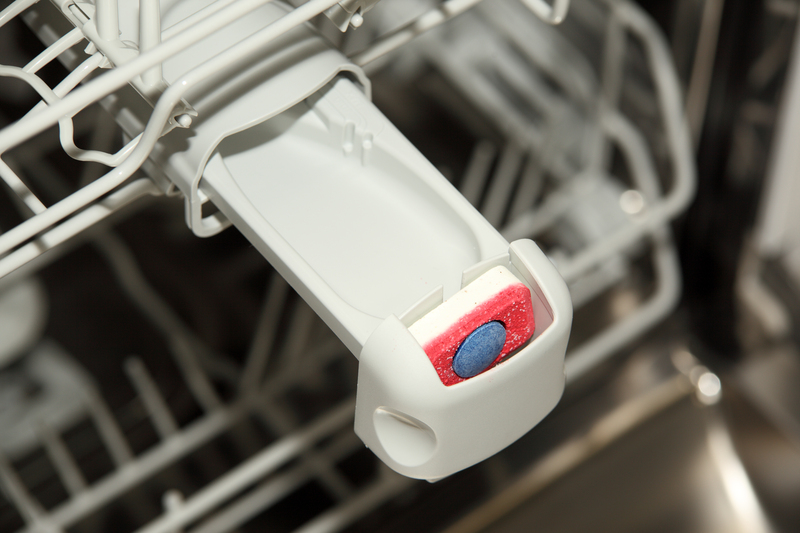Eco-Conscious Maintenance Strategies
Posted on 31/03/2025
As the world becomes increasingly aware of the environmental challenges we face, the need to adopt eco-conscious maintenance strategies is more pressing than ever. Organizations, households, and governments are all seeking ways to reduce their environmental footprint while still ensuring that their infrastructure and assets are well-maintained and functional. This article discusses the significance of eco-conscious maintenance strategies, practical approaches to implementing them, and the benefits they offer.
Importance of Eco-Conscious Maintenance
Sustainability is now a cornerstone of modern living and business practices. Eco-conscious maintenance refers to practices that minimize environmental impact while maintaining the efficiency and longevity of assets. This concept extends across various sectors, including manufacturing, transportation, real estate, and energy production. By reducing waste, conserving resources, and limiting emissions, these strategies contribute to a healthier planet and more sustainable future.

Energy-Efficient Practices
One of the key areas where eco-conscious maintenance can significant impact is energy efficiency. Implementing energy-efficient practices can reduce both operational costs and carbon footprint. This can be achieved through several methods:
- Regular Equipment Audits: Conducting regular audits of equipment and machinery helps identify inefficiencies and opportunities for energy savings. For instance, a heating, ventilation, and air conditioning (HVAC) system that is well-maintained operates more efficiently, reducing energy consumption.
- Upgrading to Energy-Efficient Models: Replacing outdated equipment with energy-efficient models can significantly reduce energy use. Energy Star-rated appliances and machines are designed to consume less power, contributing to overall energy savings.
- Implementing Smart Technology: Smart sensors and IoT devices can monitor energy usage in real-time and adjust operations to minimize waste. For example, smart thermostats can regulate temperature settings based on occupancy and weather conditions, reducing unnecessary energy expenditure.
Water Conservation Techniques
Water is a precious resource, and conserving it is essential for sustainability. Effective water conservation techniques include:
- Implementing Fixes for Leaks and Drips: Even minor leaks in plumbing systems can lead to significant water wastage over time. Regular inspections and prompt repairs ensure that water is conserved.
- Installing Low-Flow Fixtures: Low-flow toilets, faucets, and showerheads use less water without compromising functionality. These fixtures can drastically reduce water consumption in residential and commercial settings.
- Recycling and Reusing Water: Greywater systems allow for the reuse of water from sinks, showers, and washing machines for purposes such as irrigation and toilet flushing. This recycling process reduces freshwater demand.
Waste Reduction and Recycling
Minimizing waste and promoting recycling are critical components of eco-conscious maintenance. Strategies include:
- Implementing a Waste Audit: Conducting a waste audit helps identify areas where waste can be reduced. By analyzing waste streams, organizations can pinpoint sources of excess material and develop strategies to mitigate this waste.
- Establishing Recycling Programs: Recycling programs for materials such as paper, plastics, metals, and electronics reduce the amount of waste sent to landfills. In addition to environmental benefits, these programs can also result in cost savings through the sale of recyclable materials.
- Adopting Reusable Resources: Switching from single-use to reusable items, such as cloth towels instead of paper towels or rechargeable batteries instead of disposable ones, can significantly cut down on waste generation.
Sustainable Material Use
Choosing sustainable materials for maintenance and construction is an effective way to minimize environmental impact. Options include:
- Opting for Recycled Materials: Using recycled materials, such as reclaimed wood or recycled metal, reduces the demand for virgin resources and mitigates the impact of extraction and processing.
- Selecting Renewable Resources: Materials such as bamboo, cork, and recycled rubber are renewable and have a lower environmental impact compared to traditional materials.
- Utilizing Eco-Friendly Products: Eco-friendly paints, adhesives, and sealants contain minimal harmful chemicals and are less polluting. These products contribute to healthier indoor environments and reduce the release of volatile organic compounds (VOCs).
Preventive Maintenance and Predictive Analytics
Preventive maintenance and predictive analytics play a crucial role in sustaining eco-conscious maintenance strategies:
- Regular Maintenance Schedules: Establishing regular maintenance schedules for equipment and infrastructure prevents minor issues from escalating into major problems that require resource-intensive repairs or replacements.
- Using Predictive Analytics: Predictive analytics relies on data and algorithms to anticipate when equipment is likely to fail or require maintenance. By addressing issues before they become critical, organizations can reduce downtime, conserve resources, and extend the lifespan of assets.
- Condition-Based Monitoring: Implementing condition-based monitoring systems allows for real-time assessment of equipment health. This enables timely interventions and reduces the likelihood of unexpected failures.
Benefits of Eco-Conscious Maintenance Strategies
The adoption of eco-conscious maintenance strategies offers a multitude of benefits:
- Environmental Impact: By reducing waste, conserving resources, and minimizing emissions, eco-conscious maintenance practices contribute to a healthier planet.
- Cost Savings: Energy-efficient practices, water conservation, and waste reduction translate into lower operational costs. Initial investments in sustainable practices often lead to long-term financial benefits.
- Extended Asset Lifespan: Regular maintenance and the use of high-quality, sustainable materials extend the lifespan of assets, reducing the need for frequent replacements and the associated environmental impact.
- Compliance and Reputation: Adopting eco-conscious practices often aligns with regulatory requirements and demonstrates a commitment to sustainability. This enhances an organization's reputation among stakeholders and customers.
- Health and Safety: Sustainable materials and eco-friendly products contribute to healthier indoor environments, reducing exposure to harmful chemicals and pollutants.

Overcoming Challenges
Implementing eco-conscious maintenance strategies can present challenges, but there are ways to overcome them:
- Initial Investment: While sustainable practices may require an initial investment, the long-term benefits, including cost savings and environmental impact, justify these expenditures.
- Staff Training: Educating staff on eco-conscious maintenance practices is essential. Training programs can ensure that employees understand and effectively implement these strategies.
- Resource Availability: Finding sustainable materials and equipment may be challenging, but increasing demand is driving innovation and expanding availability over time. Collaborating with suppliers and staying informed about new developments can ease the transition.
Conclusion
Eco-conscious maintenance strategies are essential for fostering a sustainable future. By focusing on energy efficiency, water conservation, waste reduction, and sustainable material use, organizations can significantly reduce their environmental footprint. Preventive maintenance and predictive analytics further optimize resource utilization and extend the lifespan of assets. Although challenges exist, the long-term benefits, including cost savings, environmental impact, and enhanced reputation, far outweigh the obstacles. As we move towards a more sustainable world, embracing eco-conscious maintenance practices is not just an option but a necessity.





